|
|
Roman sights in Tunisia
by: Q. Claudius Locatus
Carthago
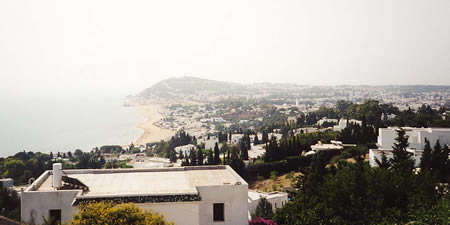
This is the place where once Carthago was, protected by the mountains and the sea.
Carthago had been destroyed by the Romans in 146 BC. But the place where once the mighty city of Carthago was didnít remain open. That place was a very important and strategic location to control the trade on the Mediterranean sea and the colonies deeper into the land of Africa. I have seen that place; nowadays a small city, called Sidi-bou-said, lies there. The peninsula is protected by mountains from all sides. Today itís a beloved place for tourists and millionaires to visit and build their villas. The Romans destroyed Carthago very profoundly, because nothing is left from it. Nothing? Almost. Only one place is rested: a small site next to a hill. When Carthago was destroyed, the Romans rebuilt it (on the order of Caesar). While rebuilding the city they were looking for a suitable place to lay out the circus. The place they had chosen was the top of a hill. But on that location the surface wasnít big enough, so they dumped the sand from the top of the hill on the (remnants) of the Carthaginian houses next to the hill to level the top of the hill. Today the circus is completely gone and archaeologists have exhumed the only piece left of the ancient Carthago. The site shows a piece of a street with houses on both sides. The street ends abruptly on the side of the hill. It gives a strange feeling walking in the houses of the once mighty and powerful enemies of Rome. I was sad that this beautiful culture had to be destroyed, but enjoyed by the thought that this helped Rome grow.
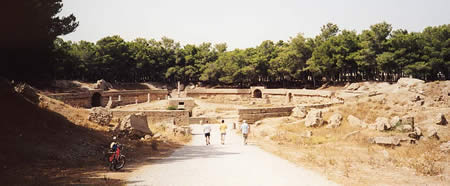
There are more remnants of Roman culture left. There is an Amphitheatre. Only the arena (inner circle) is left. One can see there the corridors beneath the surface that were used to put the wild animals or decors on stage. What also is left of the Roman Carthago is a giant theatre. It has been preserved very well. The seats are still in a wonderful state. Just a minor part of the scaena is left.
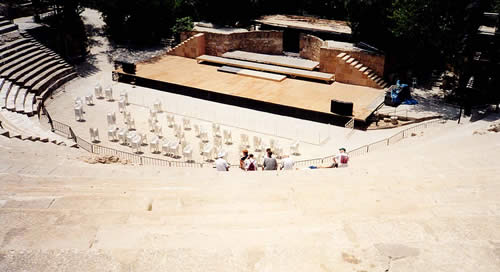
Also an impressive site is a part of the Roman port. This part had been used for building and repair of damaged ships. You can still see there the wooden beams used to drag the ships on land. There was place for about 12 ships, each ship had its own dock. Around that dock were Corinthian pillars. What they were used for is still a mystery. What also is left from the Roman Carthago are the water reservoirs. They are very impressive. There are more than 15 of them left and they look like a giant pipe cut in half. They measure about 3m in height and 75m in length. All the reservoirs lay on the same site.
El Jem
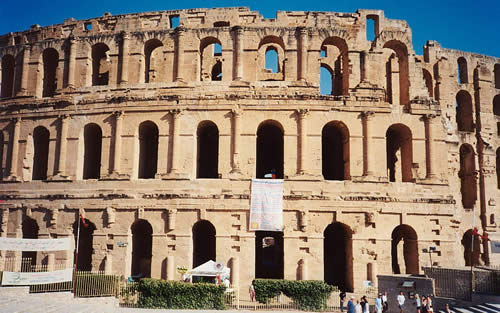
About 120km more to the south (then you are already in the desert), lays El Jem, that once must have been the mighty Roman city of Thysdrus. Nothing is left of the city. Only the Amphitheatre (2nd century AC) is left. The Amphitheatre is the second largest Amphitheatre ever built by the Romans. Only the Colosseum is larger. The outside of the Amphitheatre is very well-preserved on the one side; it has collapsed on the other side. The outside exists out of three levels of arches. The interior has completely disappeared on one side, on the other side some seats are left.
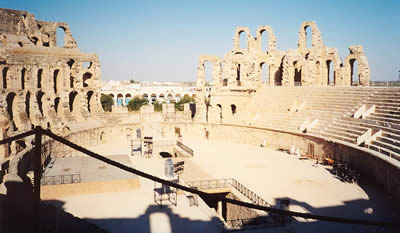
The arena is intact and you actually can walk through the underground alleys. The Amphitheatre is still used today. Proof of that is a commercial some of you may have seen. The commercial is about Johnny Walker (Whisky). In the commercial Harvey Keitel is walking through alleys and in an arena with tigers in it. That arena is the Amphitheatre of El Jem. The alleys are also a cool relief, because sitting in the sun in the desertÖ terrible! The day we visited Carthago it was about 38C and full sun. When we visited El Jem it was about 40C and a hot desert wind. The same wind that eroded the Amphitheatre.
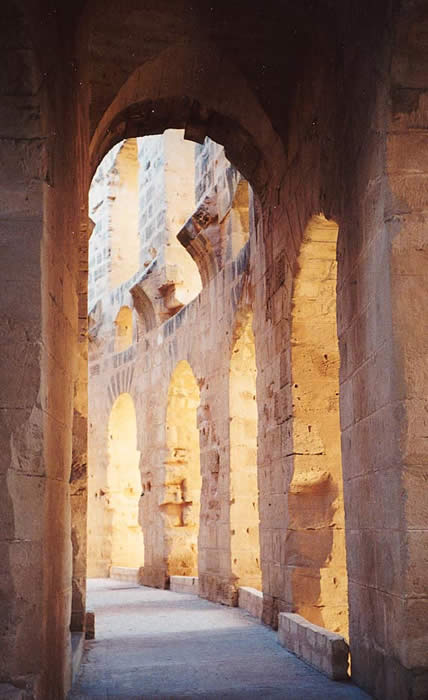
| |